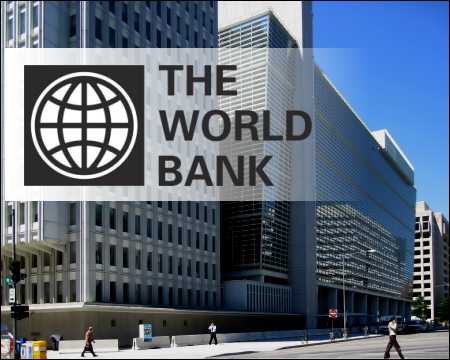The World Bank has reported that the total external debt of low- and middle-income countries rose 10 percent in 2017 to $7.1 trillion, representing about four percent increase over the 2016 debt stock.
The Bretton Woods institution stated this in its just published International Debt Statistics, IDA, 2019 which presents statistics and analysis on the external debt and financial flows (debt and equity) for the world’s economies for 2015.
The publication provides more than 200 time series indicators from 1970 to 2017 for most reporting countries.
This year’s edition is released just 10 months after the 2017 reference period, making comprehensive debt statistics available faster than ever before and presenting comprehensive stock and flow data for individual countries and for regional and analytical groupings.
Some key highlights from the analysis presented in IDS 2019, indicated that net financial inflows (borrowing and equity) to low- and middle-income countries rose 61 percent in 2017 to the highest level in three years, driven by a rebound in net debt inflows.
According to the report, net financial flows climbed to $1.1 trillion in 2017, a level last seen in 2013.
The World Bank Group attributed the rebound in aggregate net financial flows was driven by net borrowing which rose to $607 billion in 2017 from $181 billion in 2016, surpassing net equity inflows for the first time since 2013, adding that a sharp rise in both long-term and short-term debt inflows contributed to the increase.
It stated further that foreign direct equity investment (FDI) inflows, long considered the most stable and resilient component of otherwise volatile financial flows, contracted for the second consecutive year, falling a further 3 percent in 2017.
However, the report indicated that in contrast, portfolio equity inflows rose to $57 billion, an increase of 29 percent over 2016.
In addition to the data published in multiple formats online, IDS includes a concise analysis of the global debt landscape, which will be expanded on in a series of Debt Bulletin over the next year.
These data are produced as part of the World Bank’s own work to monitor the creditworthiness of its clients and are widely used by others for analytical and operational purposes.
Recurrent debt crises, including the global financial crisis of 2008, highlight the importance of measuring and monitoring external debt stocks and flows, and managing them sustainably.
The Regional level trends in external debt in 2017 accumulation varied. Countries in sub-Saharan Africa accumulated external debt at a faster pace than low- and middle-income countries in other regions in 2017: the combined external debt stock rose 15.5 percent from the previous year to $535 billion.
Much of this increase was driven by a sharp rise in borrowing by two of the region’s largest economies, Nigeria and South Africa, where the external debt stock rose 29 percent and 21 percent respectively.
South Asian economies expanded external debt stocks by 13.3 percent on average, led by Bangladesh (23 percent) and Pakistan (17 percent). The Middle East and North Africa region saw external debt stocks rise 11.7 percent as a 23 percent rise in the external debt stock of Egypt in 2017 was offset by a 5 percent increase in Lebanon.
The report showed that countries in the East Asia and Pacific region other than China increased external debt stocks by an average of 9.3 percent. External debt stocks rose 2.5 percent in Europe and Central Asia and in Latin America and the Caribbean in 2017.
Public sector entities in the world’s poorest countries borrowed externally on a large scale in 2017 despite rising concerns about debt sustainability. New loan commitments to the public sector in IDA only countries totaled $43 billion.
The report showed further that while official creditors continue to account for the largest share (around 75 percent) of long-term external debt stocks, borrowing from private creditors is the fastest growing component.
Specifically, the bank stated that external obligations to private creditors rose to $83 billion at end 2017, equivalent to 26 percent of long-term external debt. Multilateral creditors continued to be the largest creditor group, however their share of long-term external debt declined to 43 percent at end 2017, from 53 percent in 2008.
According to the multilateral financial institution, of the 59 IDA-only countries, 12 accounted for 65 percent of external debt stock at end 2017.
It reported further that Bangladesh was the largest IDA-only borrower with an external debt stock of $47.2 billion at end 2017, followed by Ethiopia ($26 billion), Ghana ($22 billion) and Sudan, $21.7 billion.






